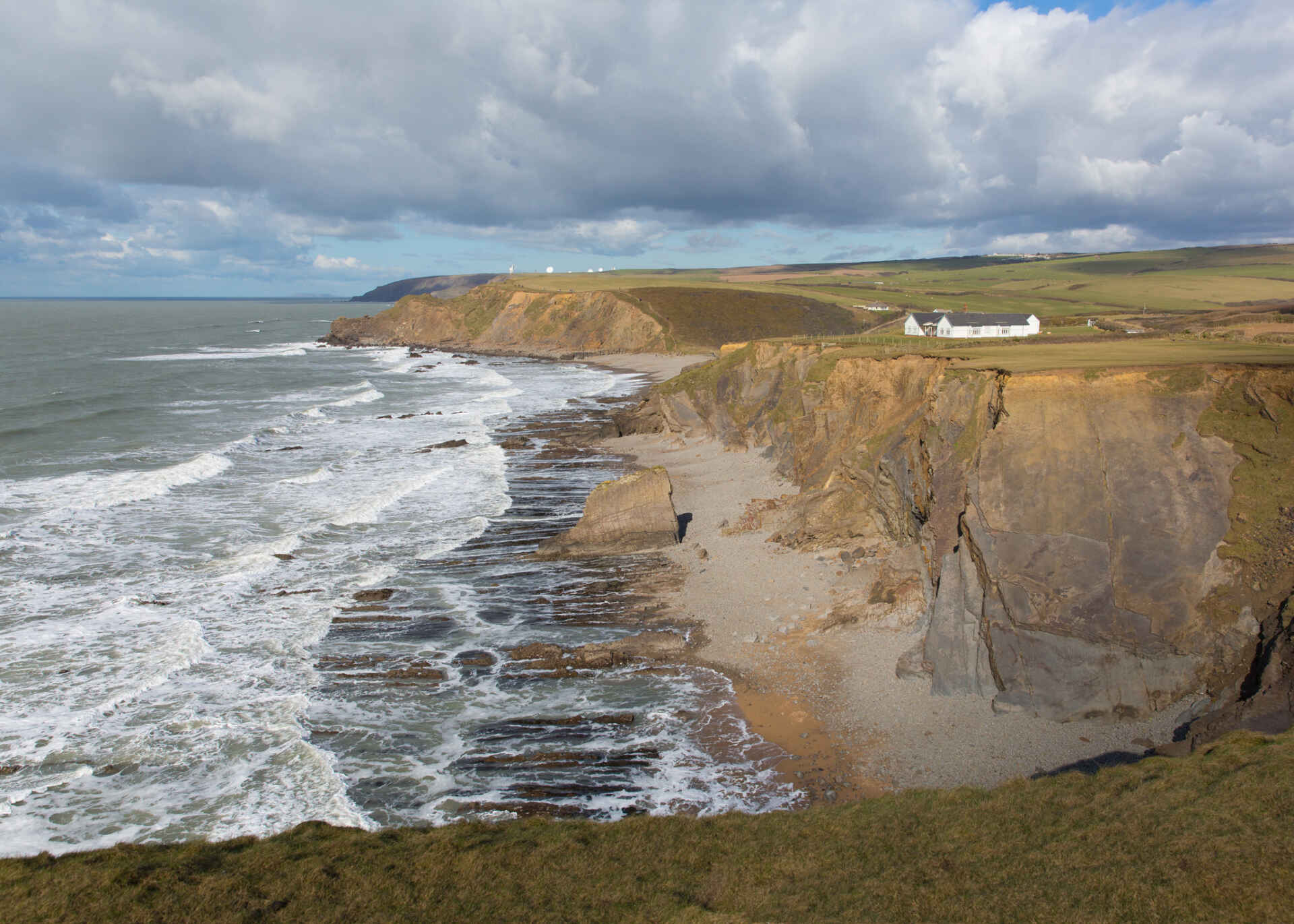Cornwall’s rugged north coast is famed for its beautiful coves, spectacular surf breaks and wild beaches, some, it has to be said, more accessible than others! Northcott Mouth, between Bude and Morwenstow, is perhaps a little less well known but this stunning sandy beach is fortunately easy to get to. Its wonderful rock formations make it a favourite with children who enjoy a spot of rock pooling. It’s also popular with surfers for those magnificent Atlantic rollers too, but there is another attraction lying hidden in the sand – the remains of a shipwreck.
The wreck of the SS Belem can be spotted at low tide and makes a fascinating and haunting place to visit. The twisted remains that we see today are all that is left of the 1,925 ton Portuguese steamer that came ashore here in November 1917.
Northcutt Mouth beach shipwrecks
But this beach is certainly no stranger to shipwreck. In August 1844 a several gale caught the St Ives brig Integrity when she was en route to Swansea with a cargo of copper ore, she was driven into Northcott Mouth and all hands were lost. However, when the sailing trawler the Arethusa drifted onto the beach in 1885 she was completely empty, like a ghost ship. This was because two weeks earlier during a storm off Trevose Head the Padstow lifeboat had daringly rescued all her crew by search-light and she had been drifting like the Mary Celeste ever since!
On the night of 20th November 1917 the SS Belem was slowly making her way from Algiers in North Africa, via Gibraltar, to Barry in Wales in a dense fog. She was a German ship that interestingly had been seized by the Portuguese when she had called in at Lisbon at the outbreak of the First World War. It was still wartime of course and old images of the wreck show guns still mounted on her deck.
The SS Belem
The Belem had launched in 1893 so was already 24 years old and it is thought that she was too slow to join a convoy of allied ships that were sailing from Gibraltar that winter. Instead she was travelling alone and keeping as close to the shoreline as possible to avoid attacks from U-boats. This was her downfall. At around midnight in thick fog the ship hit the rocks at the north end of Northcott Mouth beach, below the headland known as Menachurch Point. In panic the captain, Neunes, ordered her guns to be fired to signal their distress to anyone in earshot.
A local historian, Audrey Alymer, recorded an account of the wreck in 1998 from a man called Arthur Madge, a schoolboy at the time, who had heard the Belem’s gun fire and went to see the wreck early the next morning. Madge said: “As soon as dawn broke our master walked us along the cliffs. The fog was still very thick as we arrived and looking down, we could just see the ship on the rocks. The life-saving ‘gang’ was there in operation, hauling the poor seamen ashore by breeches buoy. They rescued all the Portuguese crew, including the little cabin boy who could speak some English . . . The crew were suffering badly from exposure. Although everything was rationed because of the war, people gave clothes and food. We boys bought them tobacco and sweets out of our pocket money”
All thirty-three of the crew were rescued by breeches-buoy, so fortunately there was no loss of life, but the ship itself was beyond saving. Despite salvage attempts she quickly began to break up in the swell.
The SS Belem has now become a site of some archaeological importance and at low tide relics of this huge ship can still be seen in the sand. The great boilers, a prop shaft, parts of the hull and stern are all visible. One piece of the ship was rescued however, apparently a huge propeller shaft was saved and used as a metal support for Barrel Rock at the end of the Bude Breakwater!
